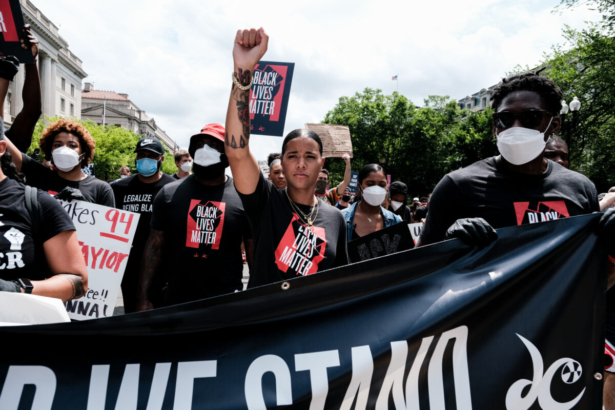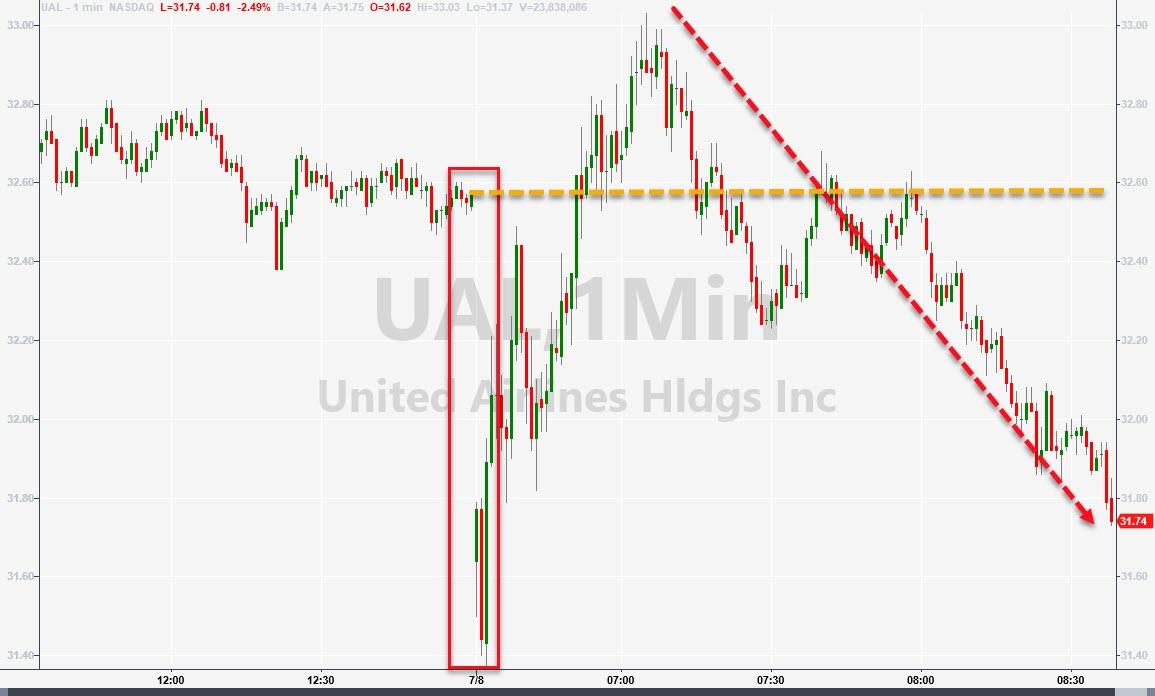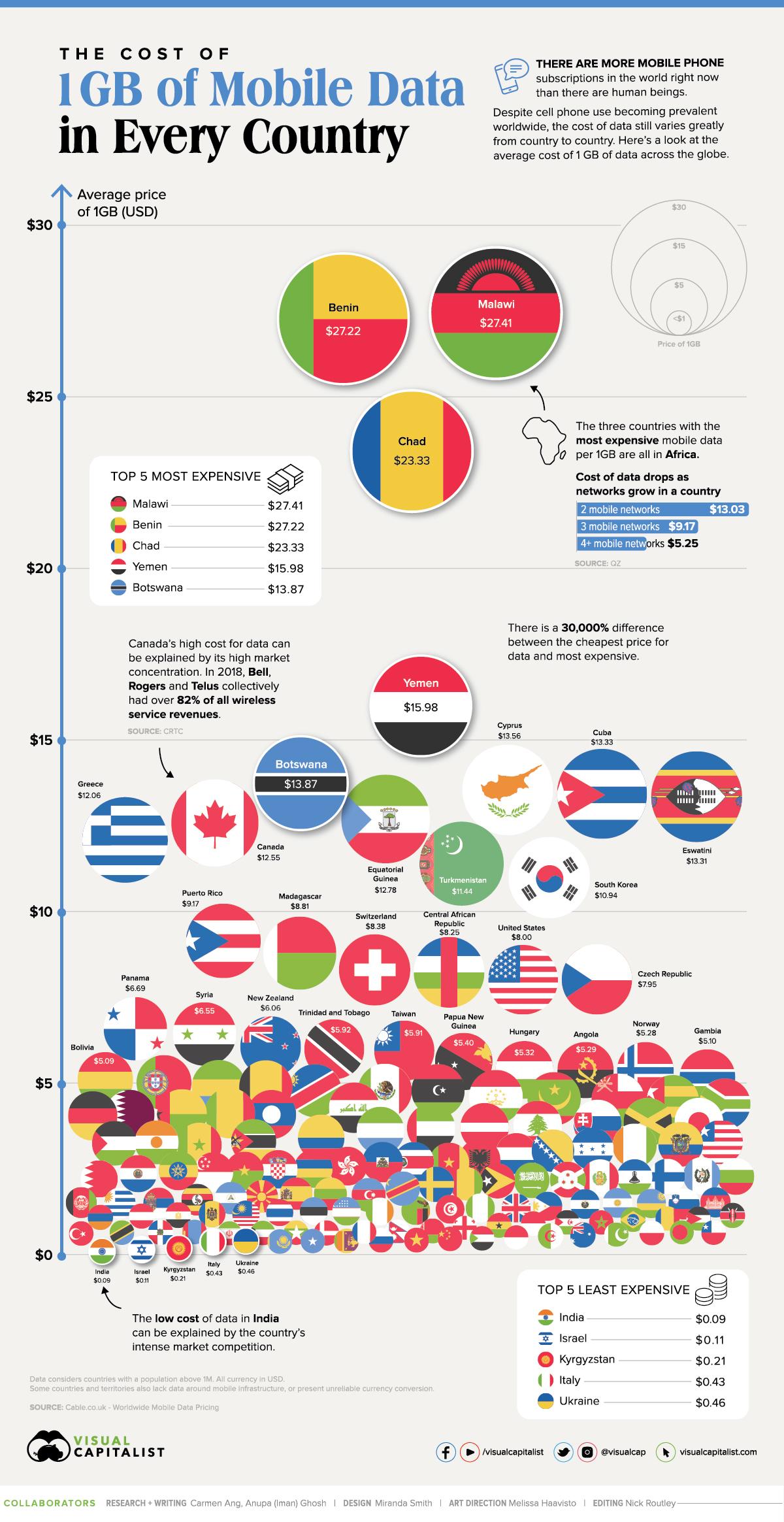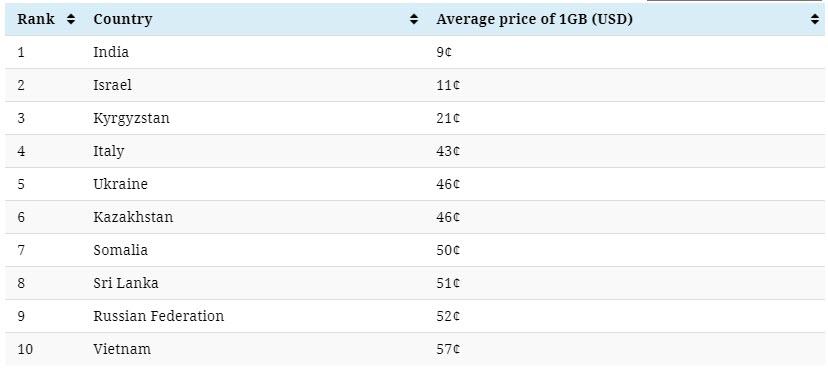MARGARET TALBOT JULY 07, 2020


The Turnaway Study, about the fallout of receiving or being denied an abortion, will be understood, criticized, and used politically, however carefully conceived and painstakingly executed the research was.Photograph by Ievgeniia Pidgorna / Alamy
There is a kind of social experiment you might think of as a What if? study. It would start with people who are similar in certain basic demographic ways and who are standing at the same significant fork in the road. Researchers could not assign participants to take one path or another—that would be wildly unethical. But let’s say that some more or less arbitrary rule in the world did the assigning for them. In such circumstances, researchers could follow the resulting two groups of people over time, sliding-doors style, to see how their lives panned out differently. It would be like speculative fiction, only true, and with statistical significance.
A remarkable piece of research called the Turnaway Study, which began in 2007, is essentially that sort of experiment. Over three years, a team of researchers, led by a demographer named Diana Greene Foster, at the University of California, San Francisco, recruited 1,132 women from the waiting rooms of thirty abortion clinics in twenty-one states. Some of the women would go on to have abortions, but others would be turned away, because they had missed the fetal gestational limit set by the clinic. Foster and her colleagues decided to compare the women in the two groups—those who received the abortion they sought and those who were compelled to carry their unwanted pregnancy to term—on a variety of measures over time, interviewing them twice a year for up to five years.
The study is important, in part, because of its ingenious design. It included only women whose pregnancies were unwanted enough that they were actively seeking an abortion, which meant the researchers were not making the mistake that some previous studies of unplanned conceptions had—“lumping the happy surprises in with the total disasters,” as Foster puts it. In terms of age, race, income level, and health status, the two groups of women closely resembled each other, as well as abortion patients nationwide. (Foster refers to the study’s participants as women because, to her knowledge, there were no trans men or non-binary people among them.) Seventy per cent of the women who were denied abortions at the first clinic where they sought them carried the unwanted pregnancies to term. Others miscarried or were able to obtain late abortions elsewhere, and Foster and her colleagues followed the trajectories of those in the latter group as well.
While you might guess that those who were turned away had messier lives—after all, they were getting to the clinic later than the seemingly more proactive women who made the deadline—that did not turn out to be the case. Some of the women who got their abortions (half of the total participants) did so just under the wire; among the women in the study who were denied abortions (a quarter of the total), some had missed the limit by a matter of only a few days. (The remaining quarter terminated their pregnancies in the first trimester, which is when ninety per cent of abortions in the United States occur.) The women who were denied abortions were on average more likely to live below the poverty line than the women who managed to get them. (One of the main reasons that people seek abortions later in pregnancy is the need to raise money to pay for the procedure and for travel expenses.) But, in general, Foster writes, the two groups “were remarkably similar at the first interview. Their lives diverged thereafter in ways that were directly attributable to whether they received an abortion.”

Over the past several years, findings from the Turnaway Study have come out in scholarly journals and, on a few occasions, gotten splashy media coverage. Now Foster has published a patiently expository precis of all the findings in a new book, “The Turnaway Study: Ten Years, a Thousand Women, and the Consequences of Having—or Being Denied—an Abortion.” The over-all impression it leaves is that abortion, far from harming most women, helps them in measurable ways. Moreover, when people assess what will happen in their lives if they have to carry an unwanted pregnancy to term, they are quite often proven right. That might seem like an obvious point, but much of contemporary anti-abortion legislation is predicated on the idea that competent adults can’t really know what’s at stake in deciding whether to bear a child or not. Instead, they must be subjected to waiting periods to think it over (as though they can’t be trusted to have done so already), presented with (often misleading) information about the supposed medical risks and emotional fallout of the procedure, and obliged to look at ultrasounds of the embryo or fetus. And such scans are often framed, with breathtaking disingenuousness, as a right extended to people—what the legal scholar Carol Sanger calls “the right to be persuaded against exercising the right you came in with.”
Maybe the first and most fundamental question for a study like this to consider is how women feel afterward about their decisions to have an abortion. In the Turnaway Study, over ninety-five per cent of the women who received an abortion and did an interview five years out said that it had been the right choice for them. It’s possible that the women who remained in the study that long were disproportionately inclined to see things that way—maybe if you were feeling shame or remorse about an abortion you’d be less up for talking about it every six months in a phone interview with a researcher. (Foster suggests that people experiencing regrets might actually be more inclined to participate, but, to me, the first scenario makes more psychological sense.) Still, ninety-five per cent is a striking figure. And it’s especially salient, again, in light of anti-choice arguments, which often stress the notion that many of the quarter to third of all American women who have an abortion will be wracked with guilt about their decision. (That’s an awful lot of abject contrition.) You can pick at the study for its retention rate—and some critics, particularly on the anti-abortion side, have. Nine hundred and fifty-six of the original thousand-plus women who were recruited did the first interview. Fifty-eight per cent of them did the final interview. But, as Foster pointed out in an e-mail to me, on average, the women in the study completed an impressive 8.4 of the eleven interviews, and some of the data in the study—death records and credit reports—cover all 1,132 women who were originally enrolled.
To the former Supreme Court Justice Anthony Kennedy, among others, it seemed “unexceptionable to conclude some women come to regret their choice to abort the infant life they once created and sustained.” In a 2007 abortion-case ruling, he wrote that “severe depression and loss of esteem can follow.” It can, but the epidemiologists, psychologists, statisticians, and other researchers who evaluated the Turnaway Study found it was not likely. “Some events do cause lifetime damage”—childhood abuse is one of them—“but abortion is not common among these,” Foster writes. In the short term, the women who were denied abortions had worse mental health—higher anxiety and lower self-esteem. In the longer run, the researchers found “no long-term differences between women who receive and women who are denied an abortion in depression, anxiety, PTSD, self-esteem, life satisfaction, drug abuse, or alcohol abuse.” Abortion didn’t weigh heavily in determining mental health one way or the other. Foster and her co-authors note, in an earlier article, that “relief remained the most commonly felt emotion” among women who got the abortions they sought. That relief persisted, but its intensity dissipated over time.
Other positive impacts were more lasting. Women in the study who received the abortion they sought were more likely to be in a relationship they described as “very good.” (After two years, the figure was forty-seven per cent, vs. twenty-eight per cent for the women turned away.) If they had been involved with a physically abusive man at the time of the unwanted pregnancy, they were less likely to still be experiencing violence, for the simple reason that they were less likely to be in contact with him. (Several of the participants interviewed for the book talk about not wanting to be tethered to a terrible partner by having a child together.) Women who got the abortion were more likely to become pregnant intentionally in the next five years than women who did not. They were less likely to be on public assistance and to report that they did not have enough money to pay for food, housing, and transportation. When they had children at home already, those children were less likely to be living in poverty. Based on self-reports, their physical health was somewhat better. Two of the women in the study who were denied abortions died from childbirth-related complications; none of the women who received abortions died as a result. That is in keeping with other data attesting to the general safety of abortion. One of Foster’s colleagues, Ushma Upadhyay, analyzed complications after abortions in California’s state Medicaid program, for example, and found that they occurred in two per cent of the cases—a lower percentage than for wisdom-tooth extraction (seven per cent) and certainly for childbirth (twenty-nine per cent). Indeed, maternal mortality has been rising in the U.S.—it’s now more than twice as high as it was in 1987, and has risen even more steeply for Black women, due, in part, to racial disparities in prenatal care and the quality of hospitals where women deliver.
Yet, as Foster points out, many of the new state laws restricting abortion suggest that it is a uniquely dangerous procedure, one for which layers of regulation must be concocted, allegedly to protect women. The Louisiana law that the Supreme Court struck down last Monday imposed just such a rule—namely, a requirement that doctors performing abortions hold admitting privileges at a hospital no more than thirty miles away. As Justice Stephen Breyer’s majority opinion noted, “The evidence shows, among other things, that the fact that hospital admissions for abortion are vanishingly rare means that, unless they also maintain active OB/GYN practices, abortion providers in Louisiana are unlikely to have any recent in-hospital experience.” Since hospitals often require such experience in order to issue admitting privileges, abortion providers would be caught in a Catch-22, unable to obtain the privileges because, on actual medical grounds, they didn’t need them. The result of such a law, had it gone into effect, would have been exactly what was intended: a drastic reduction in the number of doctors legally offering abortions in the state.
The Turnaway Study’s findings are welcome ones for anyone who supports reproductive justice. But they shouldn’t be necessary for it. The overwhelming majority of women who received abortions and stayed in the study for the full five years did not regret their decision. But the vast majority of women who’d been denied abortions reported that they no longer wished that they’d been able to end the pregnancy, after an actual child of four or five was in the world. And that’s good, too—you’d hope they would love that child wholeheartedly, and you’d root for their resilience and happiness.
None of that changes the fundamental principle of human autonomy: people have to be able to make their own decisions in matters that profoundly and intimately affect their own bodies and the course of their lives. Regret and ambivalence, the ways that one decision necessarily precludes others, are inextricable facts of life, and they are also fluid and personal. Guessing the extent to which individuals may feel such emotions, hypothetically, in the future, is not a basis for legislative bans and restrictions.
The Turnaway Study will be understood, criticized, and used politically, however carefully conceived and painstakingly executed the research was. Given that inevitability, it’s worth underlining the most helpful political work that the study does. In light of its findings, the rationale for so many recent abortion restrictions—namely, that abortion is uniquely harmful to the people who choose it—simply topples.
There is a kind of social experiment you might think of as a What if? study. It would start with people who are similar in certain basic demographic ways and who are standing at the same significant fork in the road. Researchers could not assign participants to take one path or another—that would be wildly unethical. But let’s say that some more or less arbitrary rule in the world did the assigning for them. In such circumstances, researchers could follow the resulting two groups of people over time, sliding-doors style, to see how their lives panned out differently. It would be like speculative fiction, only true, and with statistical significance.
A remarkable piece of research called the Turnaway Study, which began in 2007, is essentially that sort of experiment. Over three years, a team of researchers, led by a demographer named Diana Greene Foster, at the University of California, San Francisco, recruited 1,132 women from the waiting rooms of thirty abortion clinics in twenty-one states. Some of the women would go on to have abortions, but others would be turned away, because they had missed the fetal gestational limit set by the clinic. Foster and her colleagues decided to compare the women in the two groups—those who received the abortion they sought and those who were compelled to carry their unwanted pregnancy to term—on a variety of measures over time, interviewing them twice a year for up to five years.
The study is important, in part, because of its ingenious design. It included only women whose pregnancies were unwanted enough that they were actively seeking an abortion, which meant the researchers were not making the mistake that some previous studies of unplanned conceptions had—“lumping the happy surprises in with the total disasters,” as Foster puts it. In terms of age, race, income level, and health status, the two groups of women closely resembled each other, as well as abortion patients nationwide. (Foster refers to the study’s participants as women because, to her knowledge, there were no trans men or non-binary people among them.) Seventy per cent of the women who were denied abortions at the first clinic where they sought them carried the unwanted pregnancies to term. Others miscarried or were able to obtain late abortions elsewhere, and Foster and her colleagues followed the trajectories of those in the latter group as well.
While you might guess that those who were turned away had messier lives—after all, they were getting to the clinic later than the seemingly more proactive women who made the deadline—that did not turn out to be the case. Some of the women who got their abortions (half of the total participants) did so just under the wire; among the women in the study who were denied abortions (a quarter of the total), some had missed the limit by a matter of only a few days. (The remaining quarter terminated their pregnancies in the first trimester, which is when ninety per cent of abortions in the United States occur.) The women who were denied abortions were on average more likely to live below the poverty line than the women who managed to get them. (One of the main reasons that people seek abortions later in pregnancy is the need to raise money to pay for the procedure and for travel expenses.) But, in general, Foster writes, the two groups “were remarkably similar at the first interview. Their lives diverged thereafter in ways that were directly attributable to whether they received an abortion.”

Over the past several years, findings from the Turnaway Study have come out in scholarly journals and, on a few occasions, gotten splashy media coverage. Now Foster has published a patiently expository precis of all the findings in a new book, “The Turnaway Study: Ten Years, a Thousand Women, and the Consequences of Having—or Being Denied—an Abortion.” The over-all impression it leaves is that abortion, far from harming most women, helps them in measurable ways. Moreover, when people assess what will happen in their lives if they have to carry an unwanted pregnancy to term, they are quite often proven right. That might seem like an obvious point, but much of contemporary anti-abortion legislation is predicated on the idea that competent adults can’t really know what’s at stake in deciding whether to bear a child or not. Instead, they must be subjected to waiting periods to think it over (as though they can’t be trusted to have done so already), presented with (often misleading) information about the supposed medical risks and emotional fallout of the procedure, and obliged to look at ultrasounds of the embryo or fetus. And such scans are often framed, with breathtaking disingenuousness, as a right extended to people—what the legal scholar Carol Sanger calls “the right to be persuaded against exercising the right you came in with.”
Maybe the first and most fundamental question for a study like this to consider is how women feel afterward about their decisions to have an abortion. In the Turnaway Study, over ninety-five per cent of the women who received an abortion and did an interview five years out said that it had been the right choice for them. It’s possible that the women who remained in the study that long were disproportionately inclined to see things that way—maybe if you were feeling shame or remorse about an abortion you’d be less up for talking about it every six months in a phone interview with a researcher. (Foster suggests that people experiencing regrets might actually be more inclined to participate, but, to me, the first scenario makes more psychological sense.) Still, ninety-five per cent is a striking figure. And it’s especially salient, again, in light of anti-choice arguments, which often stress the notion that many of the quarter to third of all American women who have an abortion will be wracked with guilt about their decision. (That’s an awful lot of abject contrition.) You can pick at the study for its retention rate—and some critics, particularly on the anti-abortion side, have. Nine hundred and fifty-six of the original thousand-plus women who were recruited did the first interview. Fifty-eight per cent of them did the final interview. But, as Foster pointed out in an e-mail to me, on average, the women in the study completed an impressive 8.4 of the eleven interviews, and some of the data in the study—death records and credit reports—cover all 1,132 women who were originally enrolled.
To the former Supreme Court Justice Anthony Kennedy, among others, it seemed “unexceptionable to conclude some women come to regret their choice to abort the infant life they once created and sustained.” In a 2007 abortion-case ruling, he wrote that “severe depression and loss of esteem can follow.” It can, but the epidemiologists, psychologists, statisticians, and other researchers who evaluated the Turnaway Study found it was not likely. “Some events do cause lifetime damage”—childhood abuse is one of them—“but abortion is not common among these,” Foster writes. In the short term, the women who were denied abortions had worse mental health—higher anxiety and lower self-esteem. In the longer run, the researchers found “no long-term differences between women who receive and women who are denied an abortion in depression, anxiety, PTSD, self-esteem, life satisfaction, drug abuse, or alcohol abuse.” Abortion didn’t weigh heavily in determining mental health one way or the other. Foster and her co-authors note, in an earlier article, that “relief remained the most commonly felt emotion” among women who got the abortions they sought. That relief persisted, but its intensity dissipated over time.
Other positive impacts were more lasting. Women in the study who received the abortion they sought were more likely to be in a relationship they described as “very good.” (After two years, the figure was forty-seven per cent, vs. twenty-eight per cent for the women turned away.) If they had been involved with a physically abusive man at the time of the unwanted pregnancy, they were less likely to still be experiencing violence, for the simple reason that they were less likely to be in contact with him. (Several of the participants interviewed for the book talk about not wanting to be tethered to a terrible partner by having a child together.) Women who got the abortion were more likely to become pregnant intentionally in the next five years than women who did not. They were less likely to be on public assistance and to report that they did not have enough money to pay for food, housing, and transportation. When they had children at home already, those children were less likely to be living in poverty. Based on self-reports, their physical health was somewhat better. Two of the women in the study who were denied abortions died from childbirth-related complications; none of the women who received abortions died as a result. That is in keeping with other data attesting to the general safety of abortion. One of Foster’s colleagues, Ushma Upadhyay, analyzed complications after abortions in California’s state Medicaid program, for example, and found that they occurred in two per cent of the cases—a lower percentage than for wisdom-tooth extraction (seven per cent) and certainly for childbirth (twenty-nine per cent). Indeed, maternal mortality has been rising in the U.S.—it’s now more than twice as high as it was in 1987, and has risen even more steeply for Black women, due, in part, to racial disparities in prenatal care and the quality of hospitals where women deliver.
Yet, as Foster points out, many of the new state laws restricting abortion suggest that it is a uniquely dangerous procedure, one for which layers of regulation must be concocted, allegedly to protect women. The Louisiana law that the Supreme Court struck down last Monday imposed just such a rule—namely, a requirement that doctors performing abortions hold admitting privileges at a hospital no more than thirty miles away. As Justice Stephen Breyer’s majority opinion noted, “The evidence shows, among other things, that the fact that hospital admissions for abortion are vanishingly rare means that, unless they also maintain active OB/GYN practices, abortion providers in Louisiana are unlikely to have any recent in-hospital experience.” Since hospitals often require such experience in order to issue admitting privileges, abortion providers would be caught in a Catch-22, unable to obtain the privileges because, on actual medical grounds, they didn’t need them. The result of such a law, had it gone into effect, would have been exactly what was intended: a drastic reduction in the number of doctors legally offering abortions in the state.
The Turnaway Study’s findings are welcome ones for anyone who supports reproductive justice. But they shouldn’t be necessary for it. The overwhelming majority of women who received abortions and stayed in the study for the full five years did not regret their decision. But the vast majority of women who’d been denied abortions reported that they no longer wished that they’d been able to end the pregnancy, after an actual child of four or five was in the world. And that’s good, too—you’d hope they would love that child wholeheartedly, and you’d root for their resilience and happiness.
None of that changes the fundamental principle of human autonomy: people have to be able to make their own decisions in matters that profoundly and intimately affect their own bodies and the course of their lives. Regret and ambivalence, the ways that one decision necessarily precludes others, are inextricable facts of life, and they are also fluid and personal. Guessing the extent to which individuals may feel such emotions, hypothetically, in the future, is not a basis for legislative bans and restrictions.
The Turnaway Study will be understood, criticized, and used politically, however carefully conceived and painstakingly executed the research was. Given that inevitability, it’s worth underlining the most helpful political work that the study does. In light of its findings, the rationale for so many recent abortion restrictions—namely, that abortion is uniquely harmful to the people who choose it—simply topples.


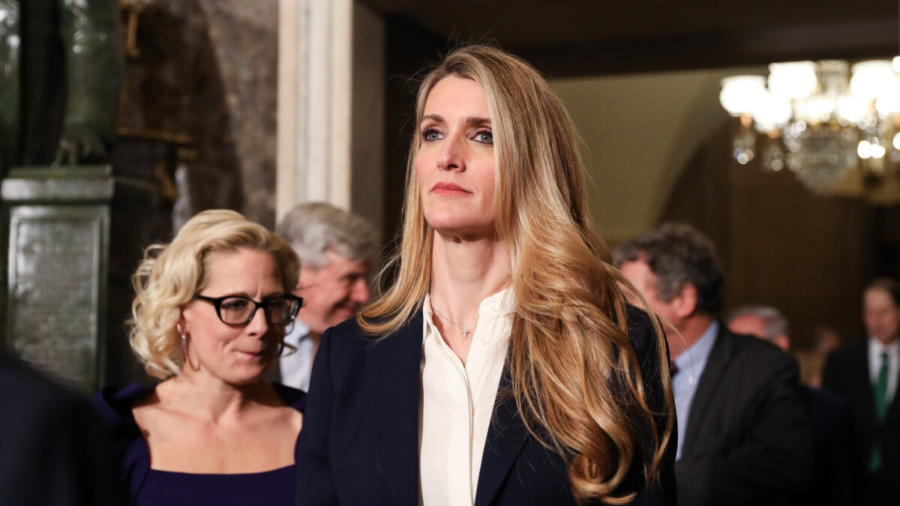
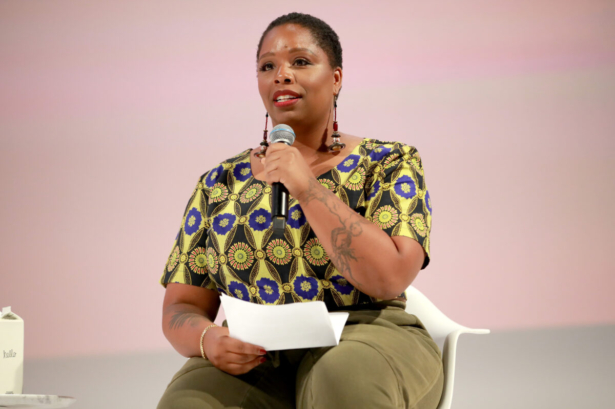 Patrisse Cullors, a co-founder of Black Lives Matter, speaks in Los Angeles, Calif., in a file photograph. (Rich Fury/Getty Images for Teen Vogue)
Patrisse Cullors, a co-founder of Black Lives Matter, speaks in Los Angeles, Calif., in a file photograph. (Rich Fury/Getty Images for Teen Vogue)